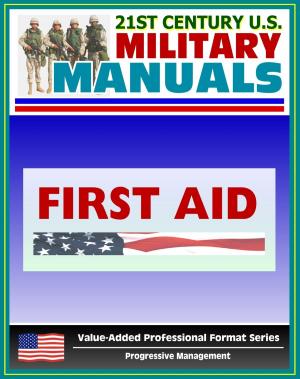The Shared Burden: United States-French Coalition Operations in the European Theater of World War II - Southern France to the Defeat of Germany, NORDWIND Offensive, Churchill, Eisenhower, de Gaulle
Nonfiction, History, France, Military, World War II| Author: | Progressive Management | ISBN: | 9781310810954 |
| Publisher: | Progressive Management | Publication: | July 4, 2016 |
| Imprint: | Smashwords Edition | Language: | English |
| Author: | Progressive Management |
| ISBN: | 9781310810954 |
| Publisher: | Progressive Management |
| Publication: | July 4, 2016 |
| Imprint: | Smashwords Edition |
| Language: | English |
This excellent report has been professionally converted for accurate flowing-text e-book format reproduction. The United States military rarely conducts unilateral actions. Normally, it operates with coalition partners. This has been true for over a century and there is little indication that it will change in the future. This monograph examines the relationship between the U.S. Sixth Army Group and its subordinate French First Army during World War II to draw out operational lessons learned in coalition warfare. The Sixth Army Group was responsible for the invasion of southern France in August of 1944, was the first Allied unit to reach the Rhine River, held the line in the face of the German winter offensives of 1944-1945, and drove into southern Germany to secure the alpine redoubt at the end of the war. The conflict between national aims and operational objectives surfaced in the army group during these nine months of war. This monograph looks at the divergent goals as they arose in three different areas: French re-armament, coalition operations, and partisan organizations. Each of these provides insights that have the potential to shape the way the United States military prepares for future coalition warfare.
INTRODUCTION * COALITION MATERIAL: ORGANIZING AND EQUIPPING THE FREE FRENCH * COALITION WARFARE: SOUTHERN FRANCE TO THE DEFEAT OF GERMANY * COALITION PARTISANS: THE FRENCH RESISTANCE * CONCLUSION
This excellent report has been professionally converted for accurate flowing-text e-book format reproduction. The United States military rarely conducts unilateral actions. Normally, it operates with coalition partners. This has been true for over a century and there is little indication that it will change in the future. This monograph examines the relationship between the U.S. Sixth Army Group and its subordinate French First Army during World War II to draw out operational lessons learned in coalition warfare. The Sixth Army Group was responsible for the invasion of southern France in August of 1944, was the first Allied unit to reach the Rhine River, held the line in the face of the German winter offensives of 1944-1945, and drove into southern Germany to secure the alpine redoubt at the end of the war. The conflict between national aims and operational objectives surfaced in the army group during these nine months of war. This monograph looks at the divergent goals as they arose in three different areas: French re-armament, coalition operations, and partisan organizations. Each of these provides insights that have the potential to shape the way the United States military prepares for future coalition warfare.
INTRODUCTION * COALITION MATERIAL: ORGANIZING AND EQUIPPING THE FREE FRENCH * COALITION WARFARE: SOUTHERN FRANCE TO THE DEFEAT OF GERMANY * COALITION PARTISANS: THE FRENCH RESISTANCE * CONCLUSION















